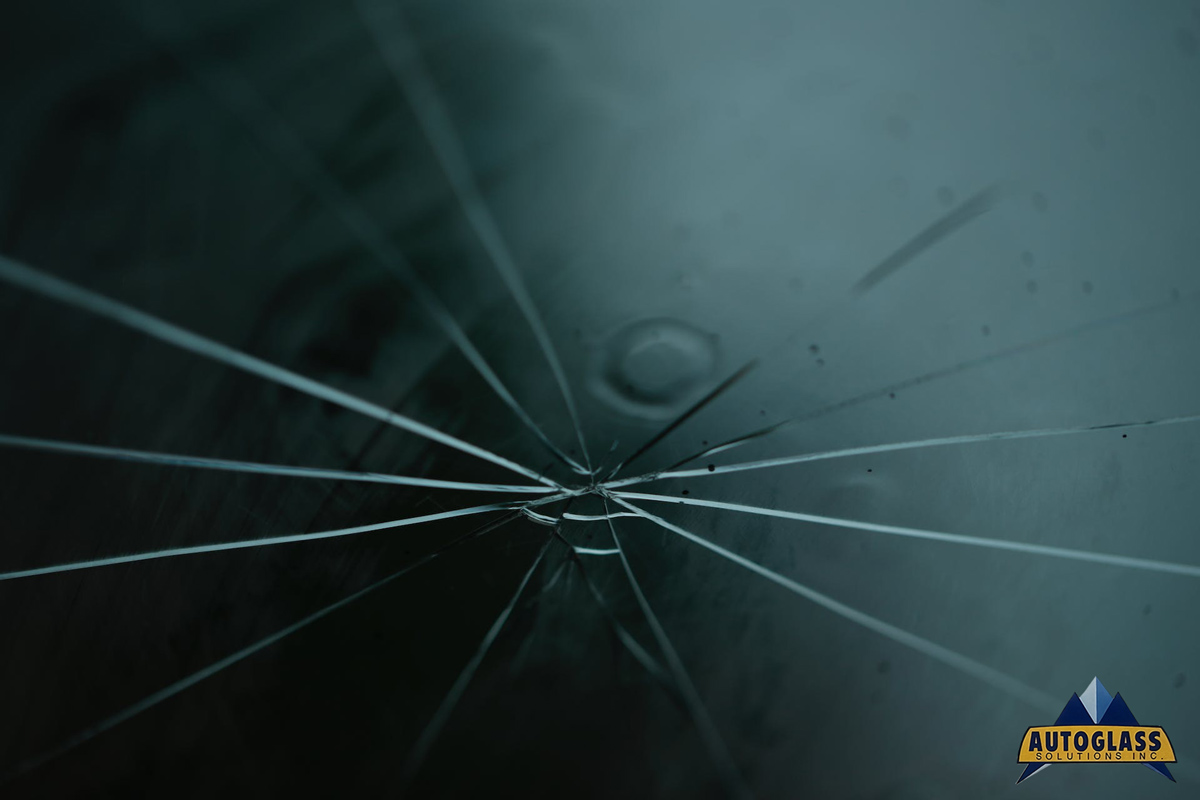The Effects of Temperature on Windshield Glass in Austin, TX

Temperature can have various effects on windshield glass. It might cause it to break or crack, or even in some extreme cases, it can create a permanent bend. This blog explores and highlights the importance of windshield glass in driver visibility and passenger safety during collisions and the effects temperature can have on it. We delve into the link between temperature and windshield glass performance, explaining how temperature changes can impact windshield glass behavior.
What is Thermal Expansion and Contraction?
Heat and cold play a big role in how things behave. When things get hotter, they tend to grow a bit as their particles start dancing and moving faster. But when it cools down, they can shrink as those particles come closer together. It is something that keeps happening, and it affects how stuff is designed and how well it works.
Windshield Glass Expansion and Contraction
To get a handle on how temperature affects your car’s windshield, you need to know a little something about what happens when things heat up and cool down. When things get hotter, they usually expand, like your windshield glass might do. And when it cools down, things tend to shrink a bit, which can happen to your windshield too. It’s something important to consider when it comes to your car’s windows. Take care of your windshield glass in different seasons as it goes through various temperatures.
Changes in size, like when parts of something grow or shrink at different rates, can really mess with materials, especially things like car windshield glasses. This difference in size can create stress, which is like the pressure that can make things bend, crack, or even break. When it comes to windshields, all sorts of things can cause this stress. For instance, one part might soak up the sun and get hot in a second, while another stays in the shade, staying cooler. This causes them to expand and contract at their speeds, and it’s like a tug of war inside the glass! If this tugging gets too strong and the glass can’t handle it, you might end up with cracks or even a shattered windshield.
Stress And Strain on Windshield Glass
These two factors are important ideas in the world of materials, and they really matter when it comes to things like windshield glass. Stress is like the material’s way of pushing back when you try to bend or squash it, and we measure it as force over a given area. It happens when something outside messes with the material’s shape or size. Strain, on the other hand, is about how much the material actually changes because of that pushing and pulling.
For windshields, this stress and strain stuff is a big deal. When the glass gets pulled and pushed by things like temperature changes, it can end up bent out of shape or even breaking. Strain tells us just how much it’s bending. So, the folks who design car windshields need to understand these ideas well to ensure they can handle all the different stresses they face, whether from the weather or the road. You can check out Auto Glass Solutions, where you can choose the type of repair or replacement you need.
Windshield Glass Cracking and Shattering
Many factors can lead to shattering and breaking of your windshield glass. Cracking is a common problem, especially in windshields, and there are a few things that can cause it. One big culprit is thermal stress, which happens when the temperature changes quickly. Imagine your windshield is cold, and then the hot sun shines on it – that can make different parts of the glass expand at different rates, and it might end up with internal stress and cracks.
Another troublemaker is mechanical stress, like when something hits the glass or rubs against it and causes damage and cracks. Even tiny imperfections in the glass, like air bubbles or uneven thickness, can create weak spots that are more likely to crack under stress. And sometimes it’s not your fault at all. If the glass is made or installed poorly, it can have stress points that make it more prone to cracking.
Car designers and engineers work hard to reduce this risk by using glass that can handle these temperature shocks, clever manufacturing methods, and smart design tricks.
What is Thermal Shock?
Thermal shock is when something goes through quick temperature swings, and it can really stress out the material, even causing damage because different parts expand and contract at different rates. In the case of windshields, if the temperature suddenly changes, it can make the glass expand and contract unevenly, creating stress inside that’s just too much for the glass to handle. This can lead to cracks or even glass shattering, which is a big worry for the folks who design cars. So, knowing how to deal with thermal shock and prevent these problems is super important for making strong, tough windshields.
Understanding Rapid Temperature Changes
Quick temperature changes can happen because of the environment, like when it’s scorching during the day and chilly at night or when the sun heats your windshield, and then the AC blasts cold air. These sudden changes lead to what we call “thermal shock,” where materials expand and contract in a hurry.
When it comes to glass, like what’s used for windshields, these quick changes can really affect it. The glass expands and contracts unevenly, and that creates stress inside. If this stress gets too strong and the glass can’t handle it, it can bend, crack, or even shatter. This isn’t good because it can mess up the windshield’s strength and put the folks inside the car in a safety pickle.
Potential Windshield Glass Failure Due To Thermal Shock
Thermal shock is a big worry when it comes to windshield glasses, especially for vehicles. What happens is that when the temperature changes fast, the glass doesn’t like it. It can expand and contract unevenly, and that can make it bend, crack, or even break if it’s under too much stress.
Consider your Vehicle’s Environment
When it comes to designing car windshields, the varying weather in different places is a big deal. In really hot areas, the strong sun and high heat can make the glass expand and maybe even crack. In super cold regions, it’s the extreme cold that can make the glass shrink and get all stressed out. Then, there are those in-between spots where the weather can go from hot to cold and back again in a year. That can really wear out the windshield, kind of like how people get tired. So, they need to make windshields that can handle all these changes without giving up and breaking.
How Do Outside Influences Matter?
External factors, like the sun and air conditioning, can really mess with a windshield glass and its ability to handle temperature changes. When the sun shines on it, the glass heats up and might get cracks because it doesn’t warm up evenly. Then, when you crank up the AC, it cools the glass down, and that can lead to stress and maybe some cracks. And if you’re going from a hot outdoors to a chilly car, it makes it even worse. So, these everyday things we do can put extra pressure on the windshield.
Windshield Glass Manufacturing and Design
Now, let’s talk a little bit about the process of windshield glass design and manufacturing. Making windshield glass is a delicate and precise process to create a strong and clear product that can handle different situations. They start with basic materials like sand, soda ash, limestone, and dolomite. These get melted at super high temperatures to make liquid glass. Then they float this liquid glass on top of molten tin, and it becomes a flat, even piece. After it cools, they do something called annealing to ease any inside stress and make it stronger. For car windshields, they add a crucial step: they sandwich a layer of Polyvinyl Butyral (PVB) between two glass layers. They heat it and press it all together to make a sturdy windshield that can keep you safe.
How does the Design of Windshield Glass Affect its Resilience?
When it comes to making car windshields, it’s super important to think about how they’ll handle temperature changes. The key is to choose materials that can handle those quick shifts without getting messed up. They also use clever techniques like reducing stress around the edges and using layered glass to spread the stress evenly. This way, they lower the chances of the glass cracking. By doing all this, the engineers make sure that the windshields are strong and reliable and can work well in all kinds of temperatures.
Tempered Windshield Glass or Laminated Windshield Glass?
Tempered and laminated glass are the main factors that make car windshields stronger and safer. Tempered glass is heated up and then cooled down fast, making it way tougher than regular glass. If it breaks, it shatters into tiny bits that are less likely to hurt you.
On the other hand, Laminated glass has different layers with a plastic one in between. This design makes the glass better at handling temperature changes, so it doesn’t crack easily. And if it does break, the plastic layer keeps the pieces together, so you stay safe. These two types of glass work together to make sure your windshield can handle all kinds of weather without failing, which makes your car safer no matter where you drive.
How to Maintain Your Windshield Glass?
Keeping your car’s windshield glass in good shape is vital for safety and making sure it lasts a long time. Here are some tips and tricks to avoid common causes of damage:
Be Gentle with Temperature Changes
Instead of using hot water to defrost your windshield suddenly, take it slow. Quick changes in temperature can crack the glass.
Sunshade Helps
Use a sunshade when you park to stop the sun from overheating your car. It can prevent your windshield from getting too hot.
Regular Check-ups
Now and then, give your windshield a once-over. Look for any small chips or cracks. These can get worse when the temperature goes up and down, so it’s good to catch them early.
Fix Small Problems Fast
If you do spot any little chips or cracks, don’t wait. Get them fixed as soon as possible. Quick changes in temperature can make them spread, and then they’re harder to repair.
Keep It Clean
Regularly clean your windshield glass to make sure you can see clearly. It also stops those little scratches from turning into bigger problems caused by temperature changes.
Change Worn Wiper Blades
If your wiper blades are getting old or damaged, replace them. This helps keep your windshield in good shape.
Use the Right Washer Fluid
Get windshield washer fluid that’s made for the kind of temperatures you deal with. It helps your windshield stay strong in all weather conditions.
Seize the opportunity and get your car a new windshield or repair yours. Get in contact with us by calling our number at (512) 241-1211.
Timely Repairs And Replacements Matter!
Taking care of your car’s windshield glass is super important for safety and how well your vehicle performs. Even those small chips or cracks can get worse when the temperature changes and that’s not good for your windshield glass. So, it’s a good idea to fix them up quickly to keep your windshield strong and clear so you can see well when you drive. And if the damage is too much to repair, you’ll need to replace the whole thing.
To sum it up, making, designing, and taking care of car windshields is a detailed job. It involves looking out for things like how they handle temperature changes and sudden shocks. But by being careful and keeping an eye on your windshield, you can make it last longer. And as we keep coming up with new stuff in the car world, we’ll keep getting better at this to make our vehicles safer and last even longer.
Auto Glass Solutions Services In Austin, TX
Auto Glass Solutions delivers the best service when it comes to anything related to windshield glass. We are located in Austin, TX. Auto Glass Solutions offers various services such as Windshield Replacement, Safety Equipment Calibration, Windshield Repair, Window Replacement, and mobile services.
If you want your windshield glass repaired or replaced or you want to get a quote, make sure to visit Auto Glass Solutions or contact us via phone at (512) 241-1211.

